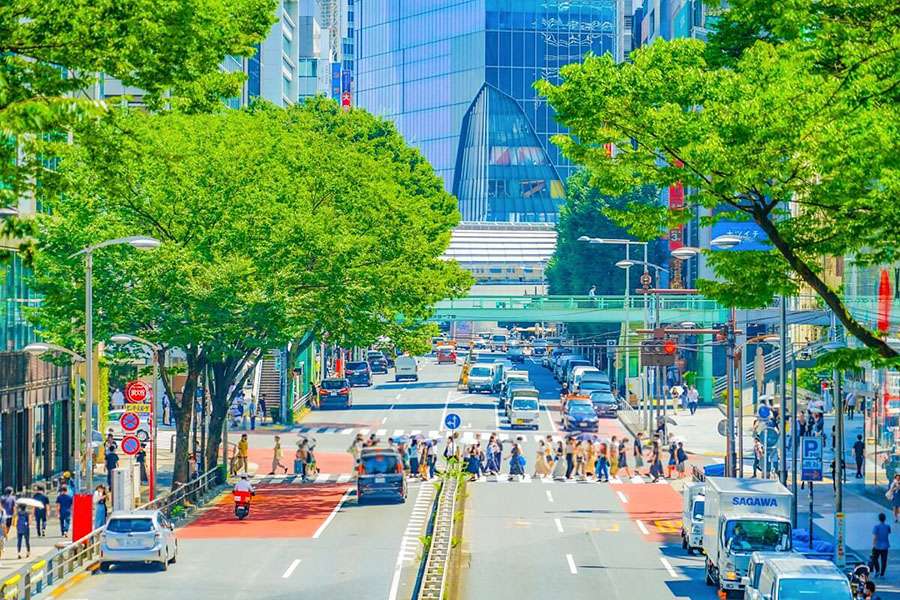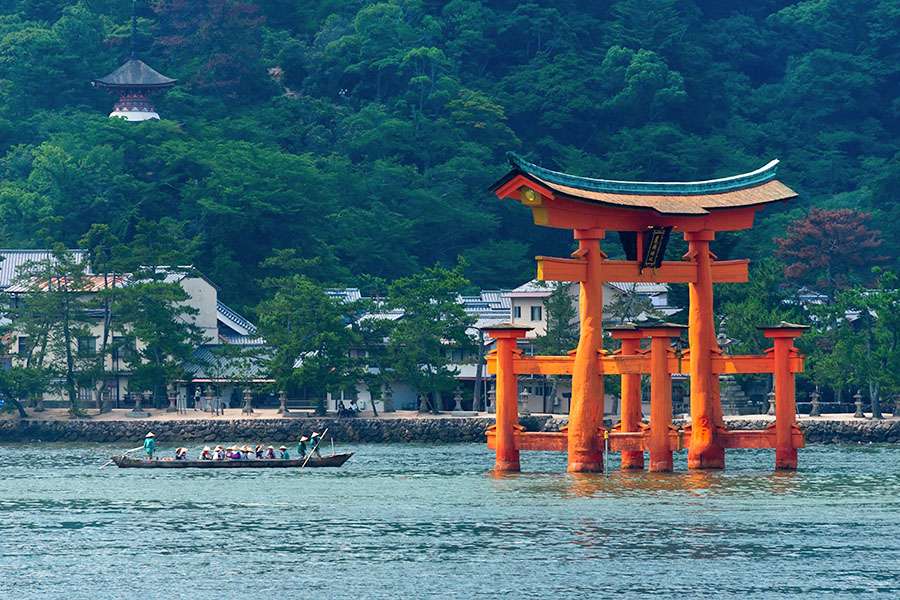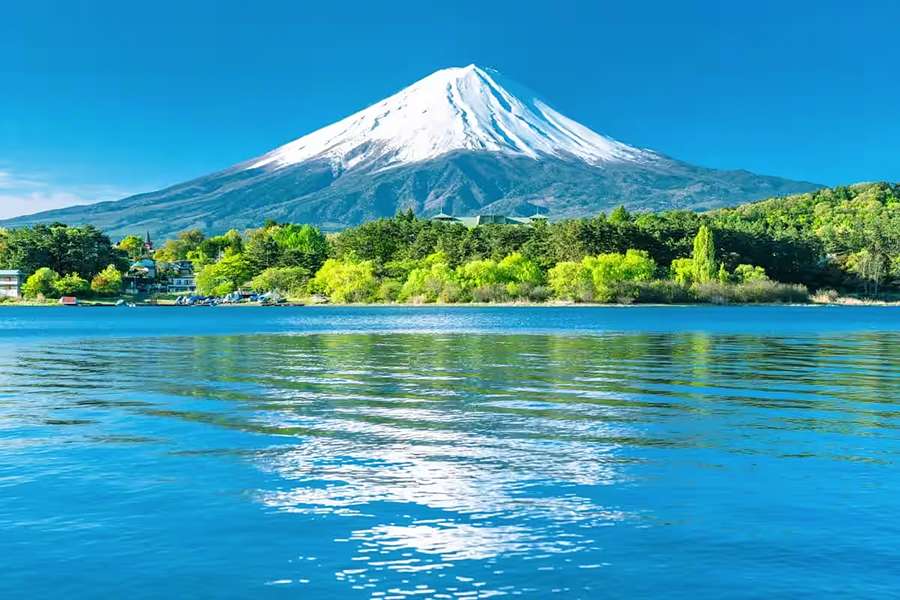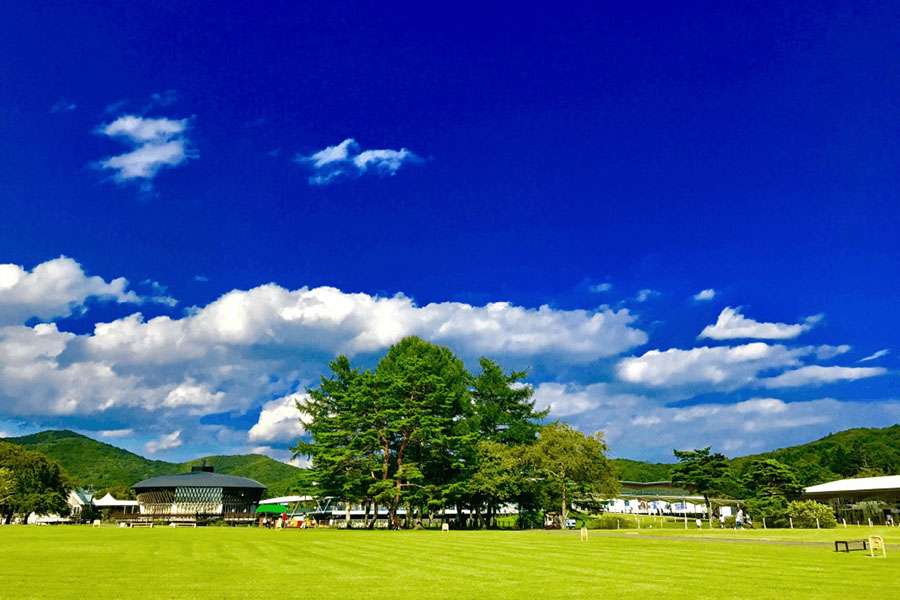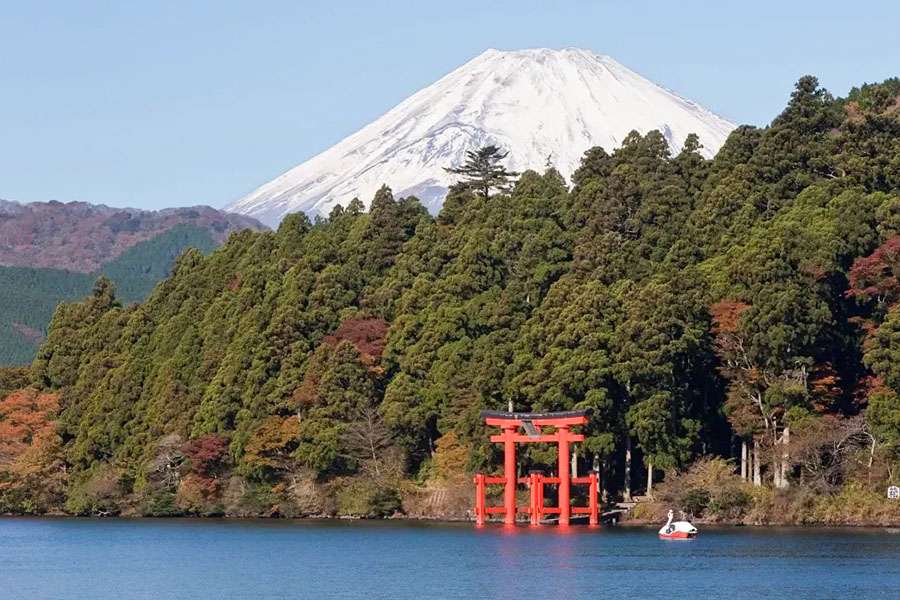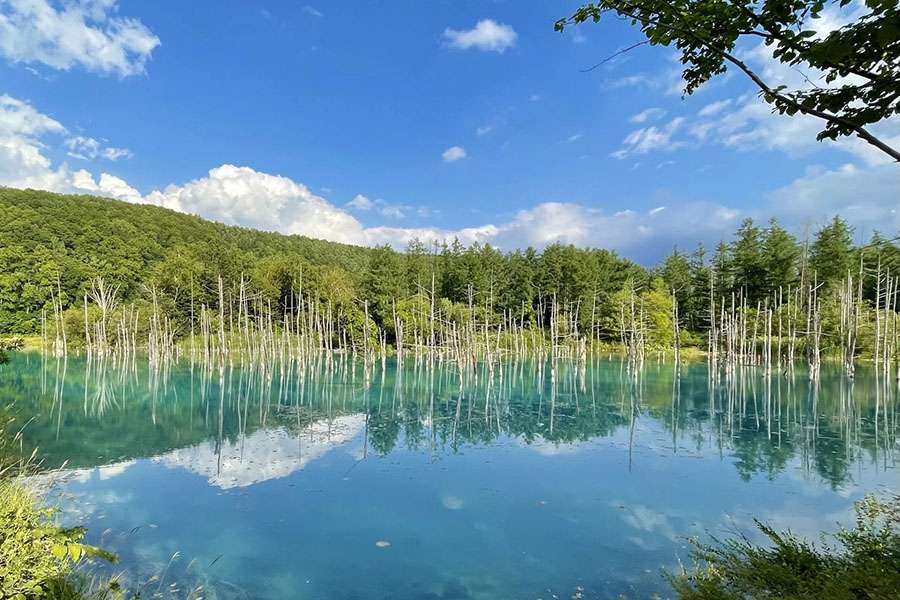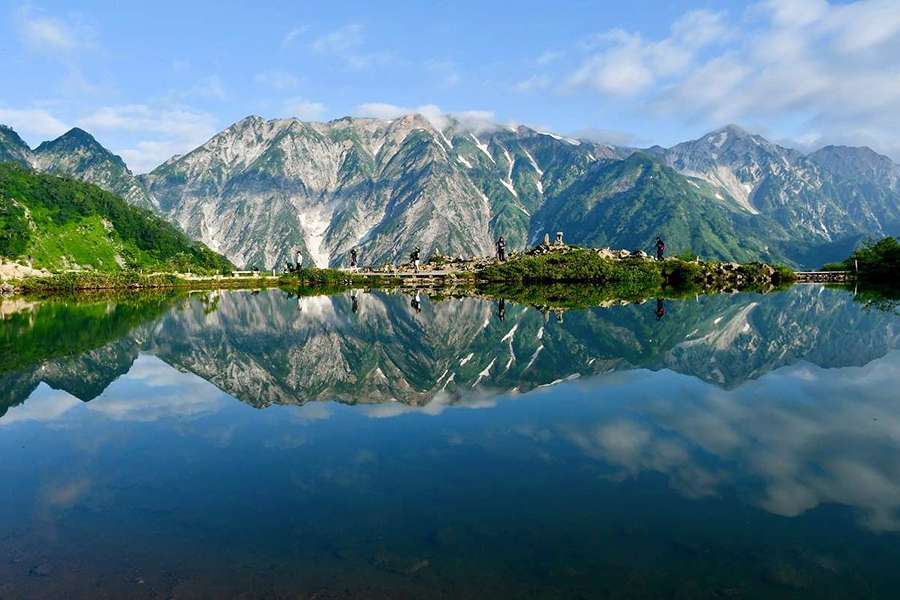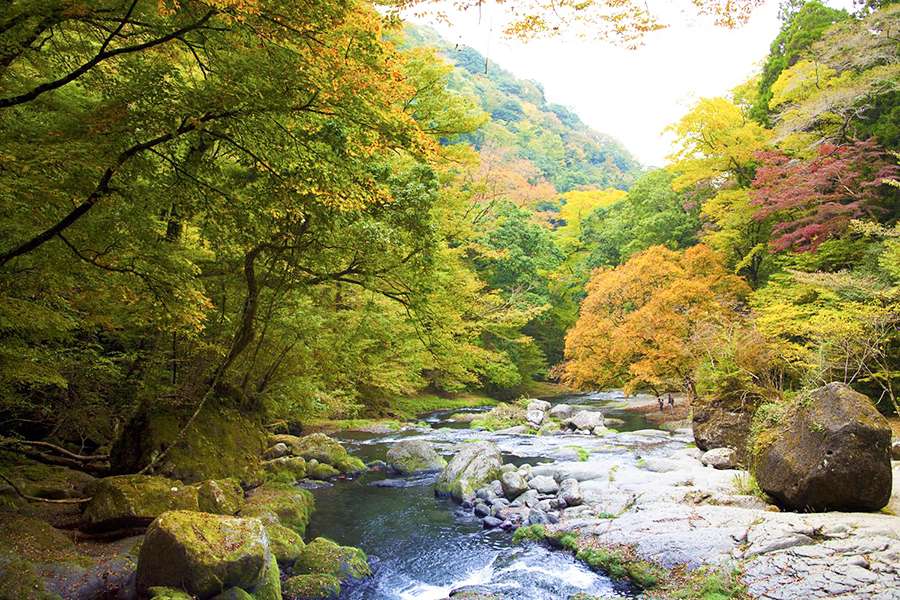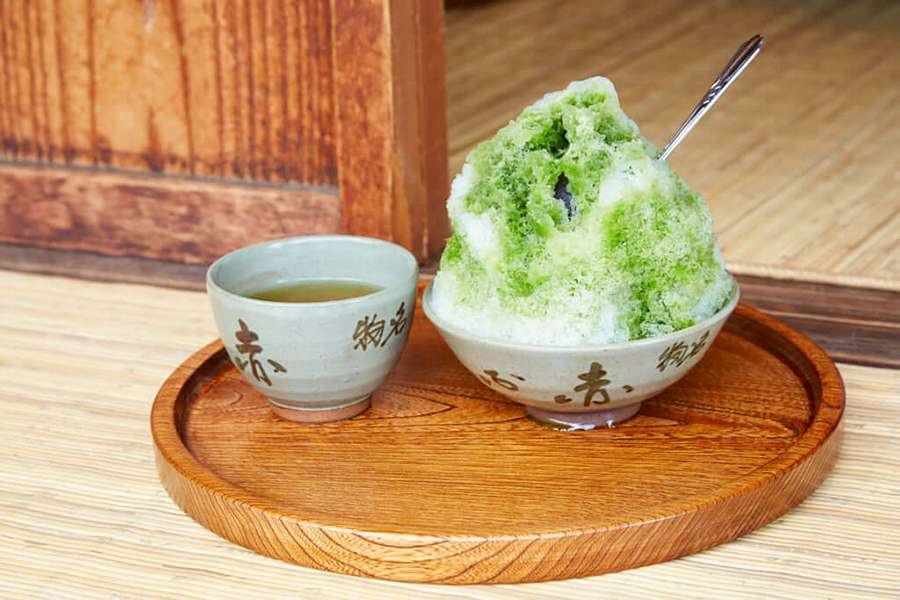Delve into Japan's summer, spanning from June to August, where temperatures can soar. However, we explore strategies to beat the heat and fully embrace this scorching season. In addition to discussing weather conditions and suggested attire, we highlight top destinations, activities, festivals, and cooling tips to ensure a memorable summer experience. Japan shore excursions will provide information about summer in Japan, including how to make the most of the season's attractions, festivals, and outdoor activities.
Temperatures and Weather in Summer in Japan
Summer spans from June to August in Japan, typically characterized by intense heat and high humidity levels. Daytime temperatures frequently surpass 30℃ (86°F), particularly in urban hubs like Tokyo, Kyoto, and Osaka. For travelers accustomed to milder climates, acclimating to Japan's sweltering conditions may pose a challenge. However, with careful planning and preparation, it's feasible to mitigate the discomfort caused by the heat and humidity.
Late June - Rainy Season in Japan
By late June, along with the soaring temperatures, humidity levels soar as well. This period, from late June to early July, marks the onset of tsuyu, Japan's rainy season. Characterized by persistent rainfall and occasional typhoons, it brings about an average daytime temperature of approximately 22℃ (71.6℉) in Tokyo, coupled with an average rainfall of 167.7 mm. Despite the weather, there are numerous activities and experiences unique to this season in Japan, such as admiring the enchanting hydrangea blooms found across the country.
July and August - Japan's Hottest Months
In recent times, summer temperatures have surged significantly, prompting news advisories urging people to safeguard themselves against the heat to prevent heat-related ailments like heat strokes. During July and August, Tokyo experiences average daily highs reaching up to 35°C (95°F). When venturing outdoors, it's crucial to stay hydrated by drinking plenty of water, donning lightweight attire, and considering carrying a handheld fan.
Moreover, elevated humidity levels are a hallmark of Japanese summer climate, ranging from approximately 78% to 83% relative humidity throughout July and August. Summer showers are frequent occurrences, often characterized by sudden, intense downpours that can catch one off guard. Carrying an umbrella at all times or having access to shelter from the rain is advisable.
Given the risk of heat-related illnesses, it's prudent to avoid prolonged outdoor exposure during the daytime. However, this season offers prime opportunities to explore indoor attractions like museums and urban facilities or to partake in outdoor activities like hiking and attending festivals in cooler, mountainous regions.
Top 6 Summer Destinations in Japan
1. Mt. Fuji
Mt. Fuji holds a special allure for many visitors to Japan, drawing them in with its iconic presence. Standing at 3,776 meters (12,388 feet), this majestic mountain welcomes climbers annually from July to September, during summer in Japan. Given its global renown, the mountain trails teem with visitors, especially on weekends and public holidays, underscoring the importance of thorough preparation for those seeking to tackle this challenge.
For those preferring to admire Mt. Fuji from a distance during summer in Japan, destinations like Hakone, Lake Kawaguchiko, and the Fuji Five Lakes region offer superb vantage points. These areas are renowned for their scenic beauty, boasting top-notch accommodations, entertainment options, and delectable local cuisine. Travelers can easily reach the mountain's base and nearby attractions from Tokyo during summer in Japan by taking the Fuji Excursion limited express from Shinjuku Station. This comfortable journey typically spans around two hours, providing convenient access to the splendor of Mt. Fuji and its surrounding attractions.
2.Nikko
Nikko stands out as one of Japan's most sought-after summer retreats, thanks to its abundant natural beauty, rich history, and pleasantly cool temperatures even amidst the sweltering summer months. Just a two-hour train ride from Tokyo transports visitors to this serene city.
While Nikko is renowned for its UNESCO World Heritage sites like Nikko Toshogu, Rinnoji Temple, and Nikko Futarasan Shrine, its status as a beloved summer getaway traces back to the Meiji Period (1868-1912). During this era, the construction of Imperial villas and diplomatic summer residences solidified Nikko's reputation as a preferred destination for Tokyo residents and international travelers alike.
Nestled in a mountainous terrain, Nikko offers breathtaking vistas, including Chuzenji Lake, the cascading Kegon Falls, and the expansive Senjogahara Wetlands, each a must-see attraction. Accommodation options in Nikko range from traditional ryokan (Japanese inns) to historic hotels like the renowned Nikko Kanaya Hotel, which boasts over a century of heritage. With its tranquil ambiance and diverse lodging choices, Nikko provides an idyllic setting for a rejuvenating summer getaway.
3. Karuizawa
Situated at a high altitude and enveloped by verdant forests, Karuizawa offers a refreshing escape from the summer heat prevalent in metropolitan areas during summer in Japan. Explore its natural wonders by embarking on hikes to renowned attractions such as Shiraito Falls and Kumoba Pond, or indulge in retail therapy at the Karuizawa Prince Shopping Plaza.
Beyond its scenic beauty, Karuizawa boasts rejuvenating hot springs that beckon visitors year-round, providing a perfect respite from the summer heat in Japan. There's nothing quite like unwinding in an onsen on a crisp summer evening. A sojourn in Karuizawa during summer in Japan promises to leave you revitalized, invigorated, and utterly relaxed, primed to tackle the rigors of everyday life with renewed energy.
4. Hakone
Hakone presents an idyllic destination for nature enthusiasts, hot spring aficionados, and art lovers alike. Abounding in art museums and galleries, as well as exquisitely designed Japanese inns renowned for their warm hospitality, Hakone beckons visitors seeking a multifaceted retreat. Accessible from Tokyo in approximately two hours, travelers can opt for a swift and comfortable journey aboard the Odakyu Romancecar departing from Shinjuku Station.
Nestled amidst lush forests and majestic mountains, Hakone enjoys cooler temperatures compared to Tokyo. Embark on a summer getaway in Hakone by immersing yourself in its diverse art scene, embarking on leisurely cruises across Lake Ashi, and indulging in the therapeutic delights of its hot springs, all while savoring delectable local cuisine.
5. Hokkaido
Hokkaido, Japan's northernmost prefecture, offers an ideal destination for a summer getaway. Apart from the breathtaking natural beauty found in places like Furano, Biei, and Akan, Hokkaido boasts charming urban centers such as Sapporo, Hakodate, and Asahikawa.
Take Hakodate, for example, which holds a rich maritime history as a port city. Here, one can encounter buildings showcasing architectural styles rarely seen elsewhere in Japan. Renowned for its stunning nightscape, Hakodate's nocturnal vistas have earned it the top spot as Japan's most beautiful night view. Summer heralds the enchanting bloom of the world-famous lavender fields at Tomita Farm, making it an unmissable spectacle. For details on accessing these attractions and other points of interest in Hokkaido, refer to the article below.
6. Hakuba
Hakuba, located in Nagano Prefecture, is renowned as one of the premier ski resorts nestled in the Japanese Alps. However, come summer, it transforms into a verdant haven boasting cool temperatures and breathtaking vistas of the alpine peaks. Accessible from Tokyo via Shinkansen and train in approximately four hours, Hakuba beckons visitors to linger and explore its offerings.
Summer in Hakuba attracts a multitude of domestic and international travelers seeking to partake in hiking, biking, swimming, and an array of outdoor pursuits. The region boasts a diverse flora, including rare plants and flowers unique to the Alps. Increasingly popular in Hakuba is the activity of glamping, offering a leisurely retreat amidst nature's embrace. For those desiring a tranquil sojourn immersed in the heart of the natural landscape, Hakuba presents an enticing option.
7. Kikuchi Gorge
Nestled within the expanse of Aso Kuju National Park, Kikuchi Gorge (Kikuchi Keikoku) stretches across 4 kilometers, offering a tranquil haven for trekkers. This picturesque gorge exudes a serene atmosphere, blending cascading waterfalls with gentle, winding stretches of water. Visitors can traverse the park's pathways and trails to explore this verdant paradise.
Blessed with a refreshing summer water temperature averaging 13 degrees Celsius, Kikuchi Gorge provides an ideal escape during the warmer months. The valley resonates with the soothing sounds of flowing rivers and the melodies of chirping birds, inviting visitors into a realm of serenity. Whether it's the vibrant colors of autumn leaves reflected in the stream or the lush greenery of spring and summer, Kikuchi Gorge enchants visitors, offering a rejuvenating retreat for all. Please be advised that Kikuchi Gorge is closed during the winter months, accessible only from March through November 30.
Things to Do in Summer in Japan
Japanese Summer Beaches and the Swimming Season
The swimming season typically commences in Japan towards the end of June and extends through August, during summer in Japan. Among the notable beaches near Tokyo are Yuigahama in Kamakura and Onjuku Beach in Chiba, while Okinawa boasts some of the country's most stunning coastal stretches.
In light of the increasingly high summer temperatures in recent years, we advise exercising caution during extended beach outings in summer in Japan. It's important to apply sunscreen, seek shade under a beach umbrella, and stay hydrated by consuming ample amounts of water. One of the optimal ways to relish Japan's beaches during summer in Japan is to visit them either early in the morning when the air is still relatively cool or at dusk. The sunsets at beaches such as Zushi, Enoshima, or Hayama are particularly breathtaking.
Japan Summer Festivals and Fireworks
Japan is renowned for its lively and culturally significant festivals, particularly during the summer season. Here are some notable summer festivals in Japan:
- Gion Matsuri (Kyoto): This renowned festival occurs in July in Kyoto, featuring vibrant processions of floats and traditional performances.
- Tenjin Matsuri (Osaka): Held in July, this festival in Osaka is among the city's largest summer events, showcasing boat processions on the Dojima River and dazzling fireworks displays.
- Awa Odori (Tokushima): Taking place in August in Tokushima, this festival is one of Japan's largest traditional dance events, with participants dancing through the streets.
- Nebuta Matsuri (Aomori): Held in August in Aomori, this festival is famous for its stunning illuminated floats depicting historical and mythical figures.
- Firework Festivals: Various cities across Japan host impressive fireworks displays during the summer, including events in Tokyo, Yokohama, and Nagoya.
- Sumida River Fireworks Festival (Tokyo): One of Tokyo's most prominent fireworks showcases, held in late July, draws millions of spectators along the Sumida River.
- Sendai Tanabata Matsuri (Sendai): Celebrated in August, this festival features vibrant decorations and paper streamers adorning the city streets.
- Yosakoi Soran Festival (Hokkaido): Taking place in Sapporo in June, this festival highlights lively dance performances blending traditional and modern elements.
These festivals offer opportunities for visitors to indulge in delicious traditional festival fare, don traditional attire like yukata and jinbei, and immerse themselves in various aspects of Japanese culture, including dance, music, and colorful decorations, all emblematic of summer in Japan. Attending one of these summer festivals promises a unique and immersive glimpse into Japan's rich cultural heritage and vibrant community celebrations.
Japanese Summer Cuisine
Japanese cuisine shifts towards chilled dishes featuring fresh ingredients, a hallmark of summer in Japan. Among the beloved summer treats is kakigori, finely shaved ice flavored with sweet syrup or condensed milk.
Kakigori desserts are readily available during the summer months, often found at festivals and featured on restaurant menus, reflecting the culinary delights of summer in Japan. Seasonal fruits like watermelon, peaches, and cherries are also popular sweet indulgences during this time.
Chilled noodle dishes play a crucial role in summer dining in Japan. Zaru soba, cold buckwheat noodles served with a light broth, and chilled somen, thin wheat noodles accompanied by fresh toppings and a cold dipping broth, are favored for their refreshing and satisfying qualities.
Summer in Japan also sees the emergence of outdoor beer gardens, attracting a large crowd seeking respite from the heat. Visitors typically pay a fixed fee for an all-you-can-drink plan within a specified time frame, often including easy-to-eat fare like edamame, french fries, and meat dishes. Additionally, some restaurants offer kawadoko, outdoor patio seating constructed over riverbeds, providing a unique dining experience during summer in Japan. These establishments serve a variety of cuisines, from Japanese to Italian and American-style dishes. Diners can enjoy the cool mist rising from the river while savoring delicious meals, with Kyoto being particularly renowned for its kawadoko experiences.
Recommended Clothing for Summer in Japan
During the scorching and muggy months of July and August, summer in Japan, it's advisable for visitors to opt for lightweight, breathable attire such as thin short-sleeved shirts, dresses, and garments made of materials like cotton. In sun-exposed areas, wearing a brimmed hat is also recommended to shield against UV rays and potential sunburn.
It's worth noting that when exploring Shinto shrines and Buddhist temples during summer in Japan, attire revealing certain body areas, like sleeveless tops, should be avoided. If planning a visit to these sites, it's wise to carry something to cover arms during the excursion. Furthermore, indoor spaces like trains, shops, and restaurants tend to be significantly cooler due to air-conditioning compared to the outdoor heat during summer in Japan. Therefore, having a light jacket or scarf handy can ensure comfort in transitioning between environments.
Exploring Japan during the summer presents an excellent opportunity to immerse oneself in seasonal traditions, such as fireworks displays, festivals, and delectable cuisine. While the heat and weather conditions require careful consideration for one's well-being, summertime in Japan offers a truly enjoyable and culturally enriching experience.

